TERMS OF USE: There is a chance that some of the content on this page has changed since it was last updated. By reading this article, you consent to our Terms of Use and Disclaimer. Happy Travels!
DISCLOSURE: Some of our posts may contain affiliate links which we may receive a commission if you choose to book something through one of our links.
These were our favorite traditional Mongolian foods that we tried and loved during our time in Mongolia.
Mutton, mutton and more mutton. Mutton for breakfast. Mutton for lunch. Mutton for dinner. Repeat!
Never in our lives have we ever eaten so much mutton before!
We loved Mongolia, a lot! It's one of our favorite places we've been fortunate to visit. Those landscapes out in the Gobi Desert, mindblowing! But when it comes to the food, we'll be brutally honest, the Mongolian cuisine didn't inspire us as much as say, the food of Thailand or the food of Nepal.
That's not to say it's all bad. We certainly had a number of culinary highlights during our big trip in Mongolia – a freshly made khorkhog (a Mongolian barbecue) cooked in a nomad's yurt in the middle of the Orkhon valley is an experience we'll never forget!
In this article, we explore all the traditional Mongolian foods we tried during our trip here – from the mutton-based tsuivans… to the more exotic airag – fermented horse milk…this is one cuisine you will NOT forget in a hurry!
Where does Mongolian food originate from?
At the end of the day, you need to remember that much of Mongolian cuisine is based on survival. This is a place with extreme climates – really cold winters dropping to -40°F (-40°C) and super hot summers rising to 104°F (40°C) in some parts. As such, this makes it very difficult to grow anything, so most fruit and vegetables are imported, which makes them expensive. The same applies to chicken – they cannot survive the extreme temperatures so they are imported, thereby also making them expensive. Mongolia is also landlocked, so no fresh fish in the day-to-day diet.
What summed up Mongolian food for us is when one of the nomadic families we stayed with said to us that fruit and vegetables are considered “unmanly” and are instead traditionally used as food for the animals….which explains why the traditional food of Mongolia is based so heavily on meat and animal fats, in particular, mutton! Mongolia is not the best destination for vegetarians or vegans…
1. Tsuivan – Mongolia's national dish
Tsuivan is the most famous of all the Mongolian traditional foods. It is also the national dish. During our tours across Mongolia, we were eating tsuivan almost every day for lunch, and sometimes for dinner as well! A tsuivan consists of noodles (usually handmade), which are steamed with diced mutton and vegetables. Sometimes beef is used in place of mutton but in our tsuivan experience, it was always mutton.
We've nothing against mutton. It's a tasty meat, and tsuivan a delicious, hearty dish. Our only gripe with it is that it's quite a fatty meat, and a traditional Mongolian tsuivan is served with a large quantity of the mutton fat…we'd always end up picking out those fatty bits…
“Guys that's prime high-quality meat! We love it because it helps us tolerate those extreme winters!” …was the reason our local friend Galmandakh gave us for the Mongolian love for fatty meat…Gal was only too happy to take said pieces of mutton fat from our plates.
At the end of the day, we all have many different culinary experiences growing up so that what may appear peculiar to us is considered a cultural delicacy to another. This is what we love about traveling, we get to experience these gorgeous differences that we'd otherwise never have discovered back home. Please bear this in mind as you progress through this article as we've still got the infamous airag coming up…
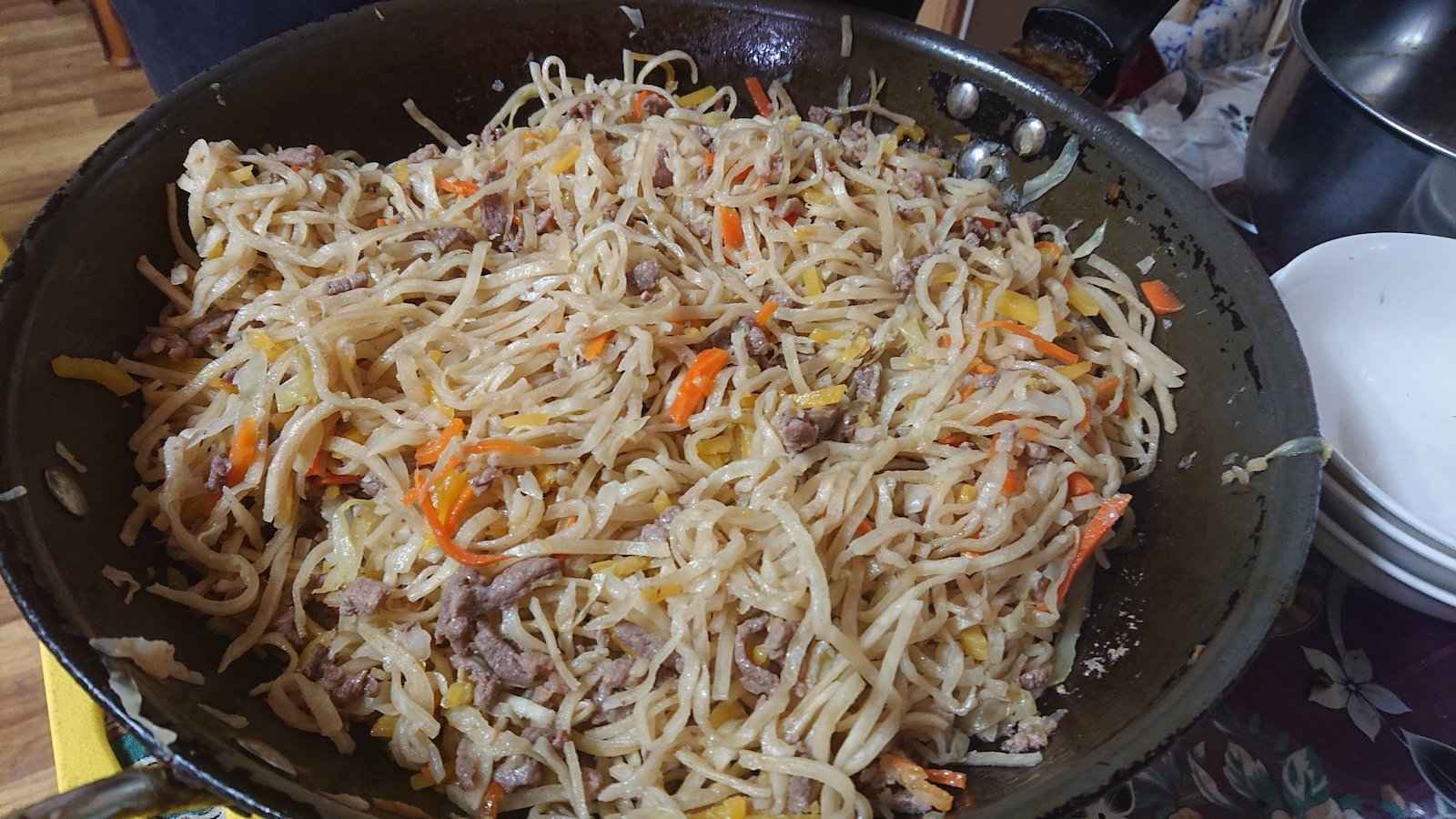
2. Khuushuur – Mongolian meat pastry
Khuushurs are a real treat!
They are one of two famous dumplings that are very popular in Mongolian traditional food (the other being buuz – see next item in this article). Khuushurs are filled with meat, onion, garlic, pepper, and sometimes mashed potato.
Can you guess what the most common meat used is?
…whilst khuushurs can be made with beef or even camel meat, 99% of the time they're filled with good old mutton meat…deep-fried in mutton fat! They are tasty, but after you've gobbled up 1 or 2, you feel rather heavy and full…
Khuusuurs are particularly common at any festivals or big events taking place in Mongolia. For example, during the big Naadam Festival in July, we saw so many street vendors lining the stadiums of Ulaanbaatar, each of them selling freshly made “хуушууp” (khuushuur). Truly an exciting mouthwatering treat – with all that mutton grease dripping off. But like we said above, once you've had a few, you're done, especially with the smell of deep-fried mutton permeating the entire stadium!
3. Buuz – traditional Mongolian dumplings
Buuz is the other traditional Mongolian dumpling. But unlike khuusuurs, they're a lot healthier and lighter. Buuz dumplings are steamed (instead of deep-fried) with minced meat, flavored with onion, garlic, salt, and sometimes with mashed potato, cabbage, or rice.
By this stage, we don't need to tell you what the most common meat used is, right?
Mutton, of course, though beef can be used as an alternative. We also spotted vegetarian buuz in a few more modern upscale restaurants in Ulaanbaatar. The sign you want to be looking out for when searching for restaurants specializing in buuz is – “Бууз”.
Buuz dumplings are more circular in shape compared to khuushurs, which are flatter. They have a small opening on top and are usually eaten by hand. They are popular throughout the year but they steal the show during the “Tsagaan Sar” Mongolian New Year in February when locals see out the old year eating dairy products – and lots of buuz.
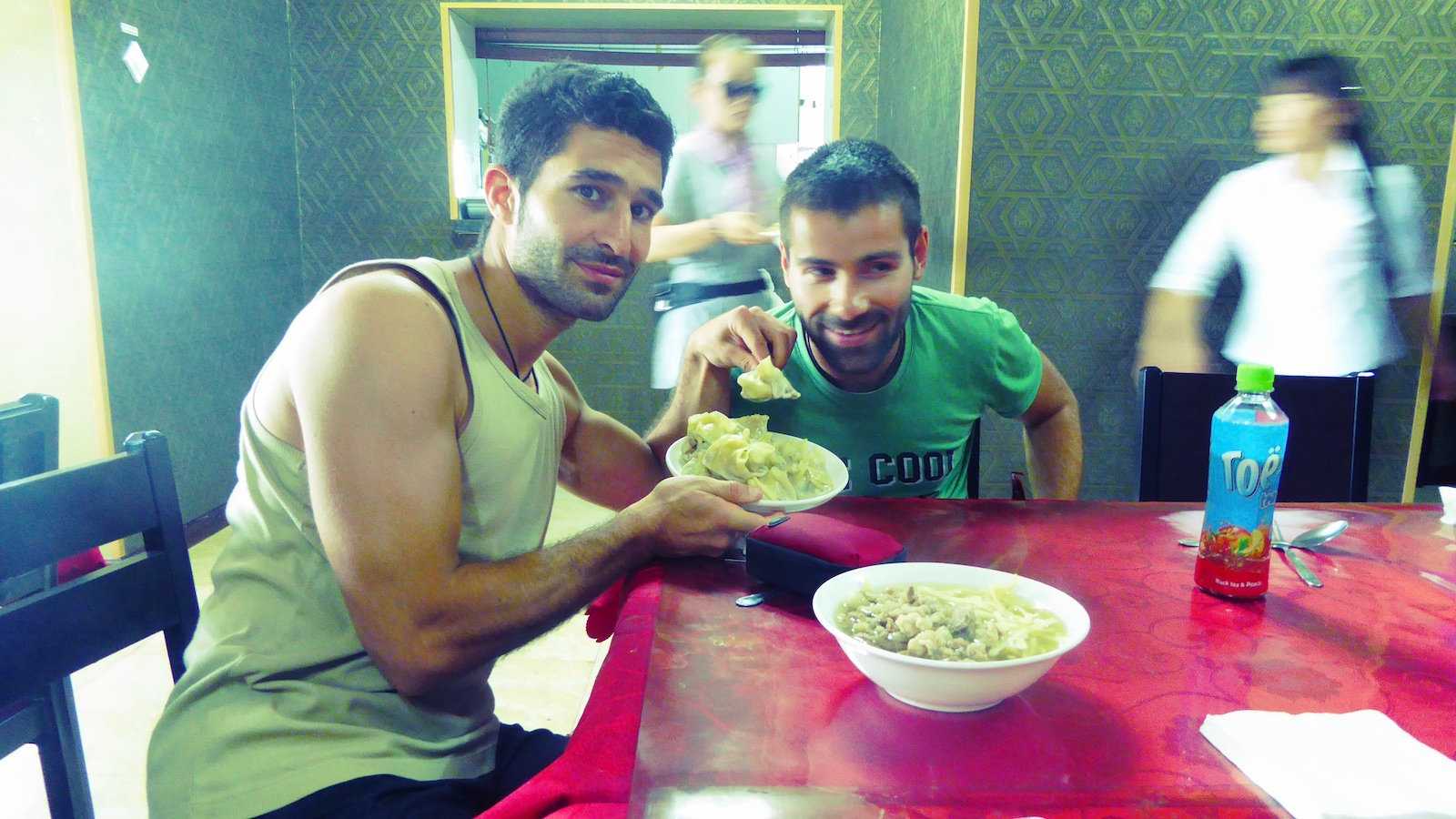
4. Khorkhog- goat BBQ cooked with hot stones
A winner for us – our absolute favorite Mongolian traditional food!
Guys you've not lived until you've eaten a freshly made khorhog in the ger of a Mongolian nomadic family in the middle of the Gobi Desert!
A khorkhog is a Mongolian stew of goat meat (a welcome break from mutton!) that is cooked for hours with hot stones in a closed deep cast-iron or aluminum pot. Inside the mix includes vegetables (usually carrots), and potatoes. The use of hot stones helps spread the heat to cook the meat better.
In a nomadic ger, the pot is cooked on a small stove, and wood or dry animal dunk (called “argal”) is traditionally used as fuel. When finished, the meat, veg, and potatoes are served, and the juice produced is collected in a bowl. The bowl is passed around for everyone to sip – it's truly divine!
A khorkhog is usually only reserved for big special occasions in Mongolia like a wedding, birthday, or anniversary because it involves the less used goat meat rather than the more ubiquitous mutton.
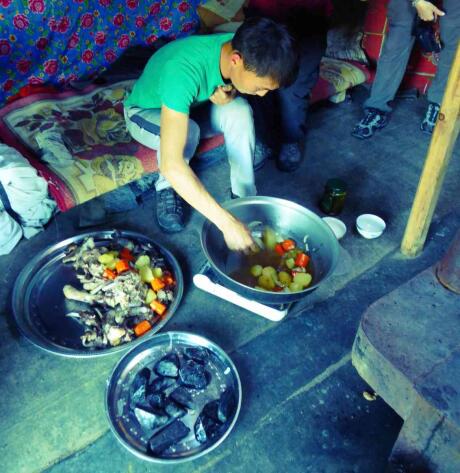
5. Airag – fermented horse milk
This is it! The one traditional Mongolian food you'll hear lots of stories about…
Airag (also spelled, ayrag) is fermented horse milk with an alcoholic content of around 2-3%. It is traditionally prepared by nomadic families in their gers by filtering the horse milk through a cloth, then pouring it into a leather sack (called a “khukhuur”). The mix is then stirred repeatedly over several days using a wooden masher (called a “buluur”). The fermentation process is caused by a combination of lactic acid bacteria and yeast.
Upon entering a nomadic family's ger, it's traditional for the family to offer guests a bowl of airag to share together, along with a plate of dairy treats like aarul (see next item). It's considered rude to reject these gifts, so you're encouraged to at least take a few sips.
The taste? A sharp and strong yogurt drink that's gone well beyond its expiry date… We're not gonna lie, we didn't really take to the airag too well at all. A few sips of it and we were only too happy to pass the bowl on to the next person… It eventually circled back to our host who enthusiastically gulped down the entire bowl while we looked on in amazement!
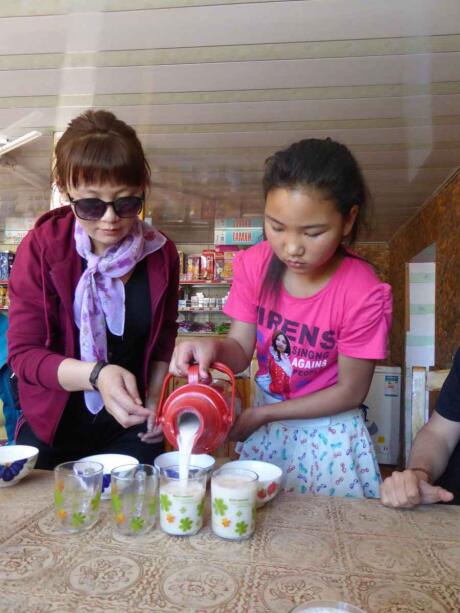
6. Aaruul – Mongolian curd cheese
Nomadic Mongolians make different dairy products depending on what animals they keep. Herds of sheep, goats, camels, horses, cows, or yaks are most common and all produce milk which is then used to make a variety of other food or drinks, which are often kept to be consumed in winter. Aaruul is one of these traditional Mongolian foods, usually made in summer when ingredients are plentiful, then eaten throughout the year.
Aaruul is a dried cheese made from cheese curds mixed with sugar, berries, and other wild plants. It's generally made from sheep, goat, cow, or yak milk as camel and horse milk is reserved for fermented drinks like airag. To make aaruul the curds are pressed through a sieve then sliced and dried outside in the sun.
The taste of aaruul is strong and unique. It differs depending on what flavoring is used but usually combines sweet with sour. It tends to become quite hard after being kept in storage, so Mongolians often suck on it rather than chewing. It's also sometimes dissolved into water to produce a milky and very nourishing drink.
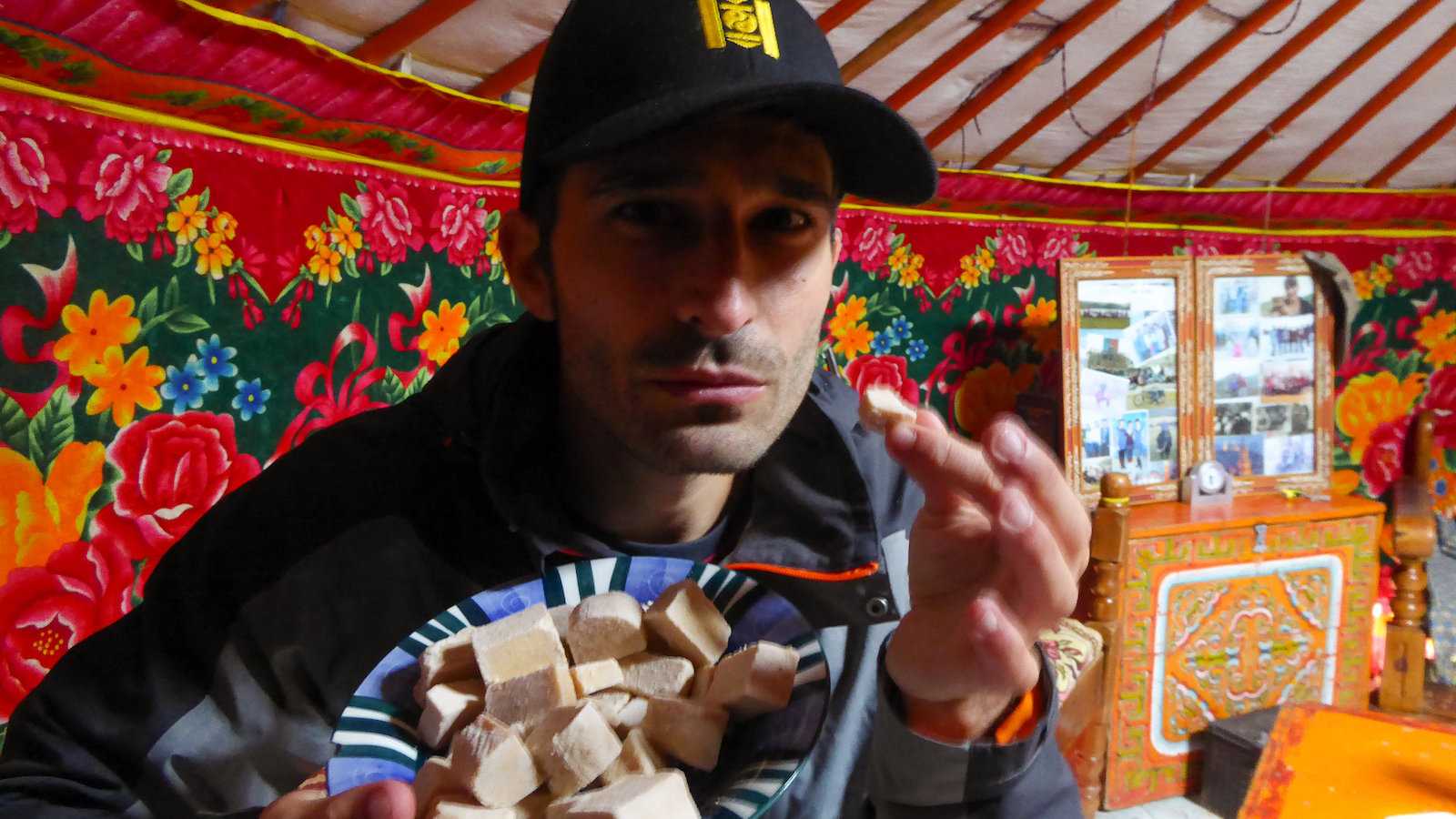
7. Eezgii – Mongolian roasted cheese curd
Eezgii is another dried-cheese traditional Mongolian food that is particularly popular among nomadic families. It's also another excellent example of how important meat and dairy are to traditional Mongolian lifestyles. You see, eezgii is made by combining two dairy products to make a third one. If you're lactose-intolerant you may want to bring along your own snacks when staying with a nomadic family in Mongolia…
To make eezgii, milk is boiled to separate the curds and whey, with the addition of yogurt and airag to help separate the two parts. Traditionally, the first milk of spring is used to make eezgii, because it's richer and fattier than what comes later. Unlike aaruul, eezgii is roasted (rather than dried), which caramelizes the sugars in the cheese, making it brown.
These dried pieces of cheese are generally kept in a sack of cloth and eaten as snacks. You might not even know it was cheese as the texture is more crunchy like granola, and the taste has hints of sweet caramel.
8. Chanasan Makh – boiled mutton meat
One of the most common traditional Mongolian foods that you'll find in a nomadic family is the simple but tasty “chanasan makh”. It is made by boiling meat, bones, and innards together in salted water then leaving it to simmer and slowly cook for several hours. That's it!
The meat (mutton most of the time, of course!) becomes tastier and more tender the longer it is cooked for.
Today, Mongolian families might also add some vegetables and noodles to the pot as well. It's usually served by putting the meat (and vegetables if included) on a platter for everyone to take what they want, while the broth is served in a separate bowl and shared around, similar to the khorkhog broth.
Chanasan makh is a hearty dish that was designed to keep nomadic people going through the long days of travel and herding. It's seen as a strengthening meal, so was often served before beginning a journey. On one occasion we had it after a long day of horse riding in the Mongolian steppe and it was goooooood!
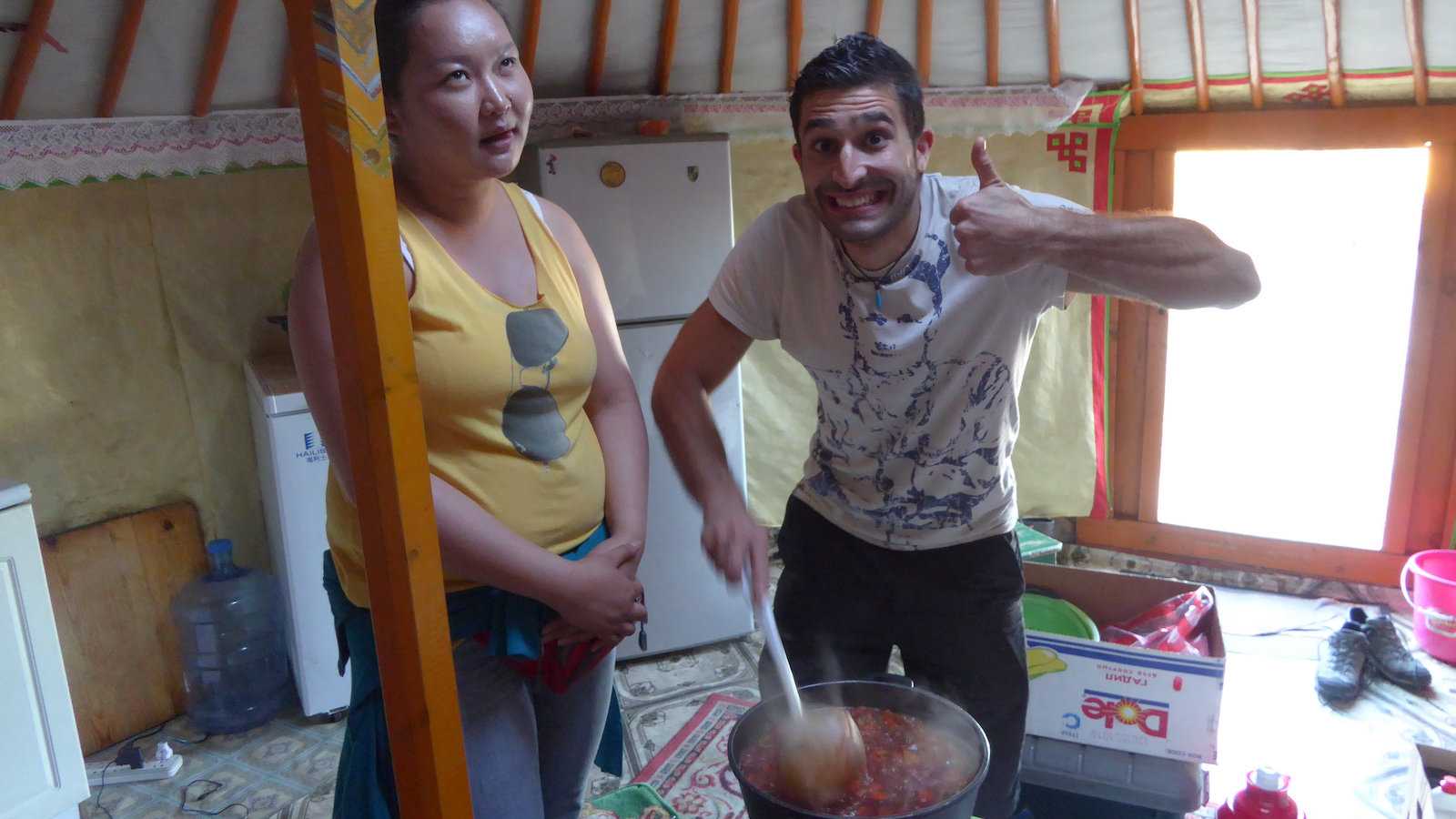
9. Boodog – marmot cooked with hot stones in the stomach
Boodog is a very unique traditional Mongolian dish that's generally reserved for special occasions. It's made by cooking a marmot (a large rodent), or sometimes a goat, inside its own skin over a barbecue. Boodog (pronounced baw-dug) is a testament to how little nomadic Mongolians and Mongolian warriors carried with them. You don't need pots or pans if you're using the animal's body to cook with!
Usually, boodog is made with the Tarbagan marmot during the Fall months as that's when they are fattening up for winter hibernation. The dish is made by slicing the marmot (or goat) from neck to groin, removing all the meat (including the liver and kidneys), seasoning it then putting it back into the carcass with hot stones and vegetables.
The whole animal is then cooked over an open fire or with a blowtorch. Once it's ready, the succulent meat and vegetables are served. This boodog bad boy is intended to feed a large group of people – it dates back to the days of Genghis Khan who would throw boodog banquets to celebrate a victorious battle!
10. Boortsog – Mongolian fried donut
And now for my favorite part of any meal – the sweets! Boortsog is usually called a type of Mongolian biscuit, but really it looks more like a donut and is deep-fried rather than baked. This tasty traditional Mongolian food is common throughout central Asia but it is generally believed to have originated in Mongolia.
While most Mongolian dishes heavily favor meat and dairy, boortsog is the sweet exception. It's made by creating a dough of wheat, milk, butter, sugar, and water, which is traditionally deep-fried in mutton fat.
Boortsog is usually served to guests with hot tea (which you can dip them into), as snacks, or as a dessert with more sugar, honey, butter, or even cheese on top. It's quite common to see these delicious little balls for sale at festivals in Mongolia. During Nadaam, we went boortsog ballistic and gobbed up a handsome number of these sweet-tasting rounded treaties!
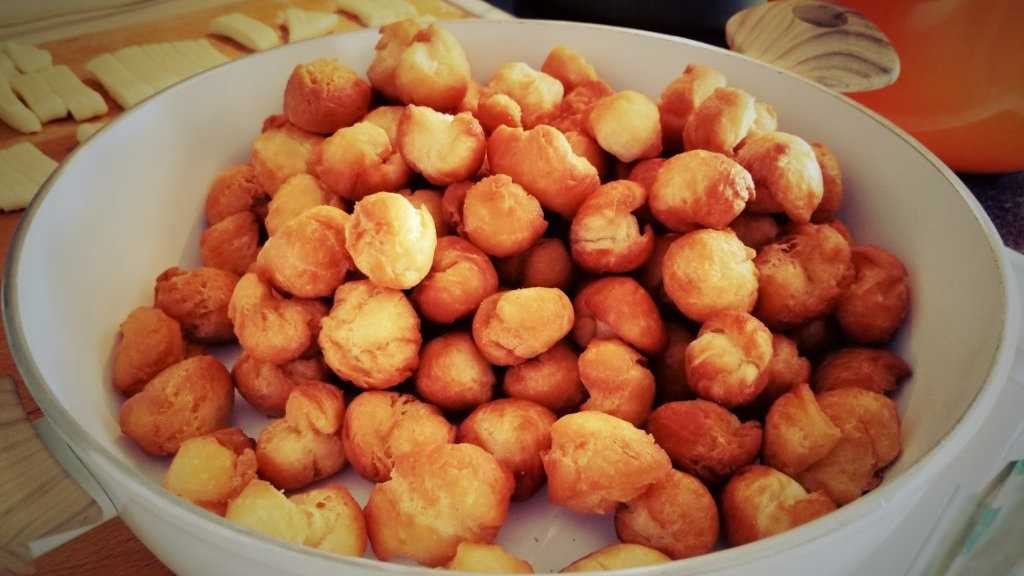
For more inspiration:
- Read these interesting facts about Mongolia you might not have known already
- Check out our experience touring central Mongolia
- As well as what it's like exploring the Gobi Desert in Mongolia
- Don't miss the video of our travels through Mongolia
- If you're heading to China, read our guide to Xi'an and seeing the Terracotta Army
- As well as our experience traveling on the Trans-Siberian railway from Russia to Mongolia
Like this post? Pin it
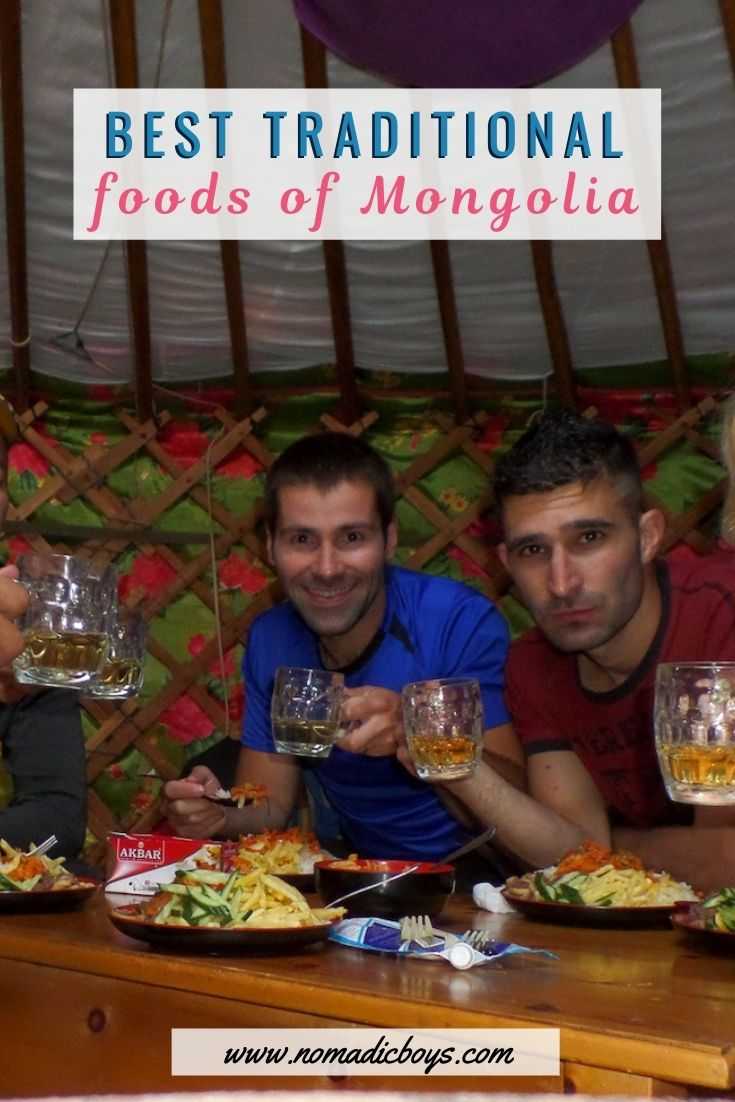



Friday 16th of December 2016
5
Tina pik
Tuesday 16th of August 2016
Mmm I'd love to try some mutton. How was the flavour? I've tried the salted milk drink before and subtly spat it back out haha. This is a really insightful post, I've always wondered what some of their staple dishes were. Planning to head there in 2018, just a bit worried since I'll be traveling with my 3-year old. What are the health services there like in case you get sick?
Nomadic boys
Tuesday 16th of August 2016
There are services in the cities, but out in the countryside, it's just you with animals :)
Rita B.
Monday 27th of April 2015
I am going to Mongolia in late June and early July. I am highly allergic to goat products. What do you suggest?
Nomadic boys
Monday 27th of April 2015
Hi Rita thanks for your comment. They also make products from sheep and yak. If you go on a tour, your guide will advise you.
Otherwise we stuck to Korean food in Ulan Bator- they are cheap and everywhere.
Andrew
Tuesday 12th of August 2014
That sounds like quite a limited diet in mongolia. Are there no lakes or rivers for fish? We're still not so sure about visiting or not...
Arthur
Tuesday 18th of April 2017
Lots of lakes and river. Fish sold I. Ulaanbaatar
Nomadic boys
Wednesday 13th of August 2014
Do it!! You will love it there. The scenery is incredible.